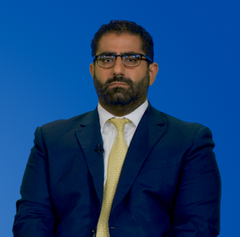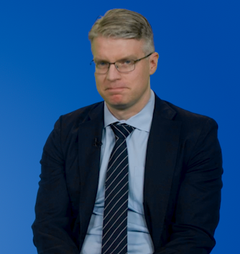
Best Practices and Considerations for Monitoring Treatment Responses in mNSCLC
Specialists delve into strategies for monitoring treatment response and the importance of assessing symptoms during the initial three treatment cycles.
Episodes in this series

Mark Socinski, MD: In patients who are not on clinical trials, how do you follow them for response?
Martin Dietrich, MD, PhD: Well, it depends on the treatment setting for immunotherapy. I typically spend a good amount of time educating up front. But again, it’s not very easy to say. If I see a patient once a week, I’d be able to catch [adverse] effects more frequently. So I typically do it in conjunction with their treatment visits in the beginning. Look at the distribution curve of occurrence of [adverse] effects. It’s really between the first 6 to 12 weeks when the majority of [adverse] effects manifest; it comes back to how much treatment is needed. With immunotherapy, I do think that late responses are possible. So I try to get the first scan no earlier than 3 months, really try to capture the full immunotherapy effect, trying to avoid concerns about pseudoprogression or other artifacts that may not be easily captured. And then otherwise it’s clinical. I think patients feel that if their cancer is progressing, if there is a clinical worsening, we would be adjusting from the settings—different for targeted therapy. I want to know relatively quickly how patients are doing. I do think the extension of the intervals of visits is very reasonable. I think patients have learned the checklists and the infusion areas. They know what to look out for. And the time toxicities are not to be underestimated. If you get treatment for 2 years every 3 weeks, you spend time waiting for labs and infusions. This is something to be considered, in addition to the obligation for the provider to spend time. I do think that patients eventually will reach the level of education that will make them very self-sufficient.
Mark Socinski, MD: …I made a slide years ago in the chemotherapy area where duration of treatment was being evaluated; the slide was called the Intrusiveness of Treatment. To your point, you, as a patient, have to go to the infusion room. You have to get a blood count. You may not be able to drive. Your daughter may have to take a day off from work and all these sorts of things. And [for] my patients, I tend to see them between cycles 1 and 2, mainly to make sure we don’t have to adjust supportive care and all that stuff. But we know from years ago that the greatest impact you make on patients’ symptoms is in the first couple or 3 cycles. And so patients will often come back and say, “My cough is better.” And I’ll say to them, “Why do you think that’s happening? It’s happening because your cancer is shrinking, and the treatment seems to be working.” And that’s why I will delay CTs until after 4 cycles. What am I going to do with 1 or 2 cycles? I’m not going to do anything differently in that in that setting.… I will ask them before we start treatment, “What are the 3 things that bother you most—cough, pain, shortness of breath?” Whatever it is, and then I say, “OK, I’m going to ask you in a month [about] those same things. Tell me if you think they’re better or not.” If they’re not better or they’re worse, obviously that’s a concern. But that really is only a minority of patients nowadays with the therapies that we have.
Martin Dietrich, MD, PhD:I would agree with that. I think the close observation in the beginning is a winning concept. Seeing the responses to clinical responses and ones that we’re using mainly on trials, but also sometimes not with standard of care. It’s circulating tumor DNA fractions and very, very correlated. Obviously, those data are far from being mature and not part of the guidelines, but very, very prognostic in regards to how they would fare. I wouldn’t do this too quickly. But I do think that after 6 weeks, we see a tendency where a tumor response is going to go up. And so I think this is going to be part of our attempt, especially in the curative-intent setting, to maybe reduce the frequency of scans. Many of them cost a lot of money and take a lot of time. Radiation exposure, especially in younger patients, [is a concern]. This will be an additional opportunity for accelerating the treatment surveillance.
Transcript is AI-generated and edited for clarity and readability.
Newsletter
Stay ahead of policy, cost, and value—subscribe to AJMC for expert insights at the intersection of clinical care and health economics.










































